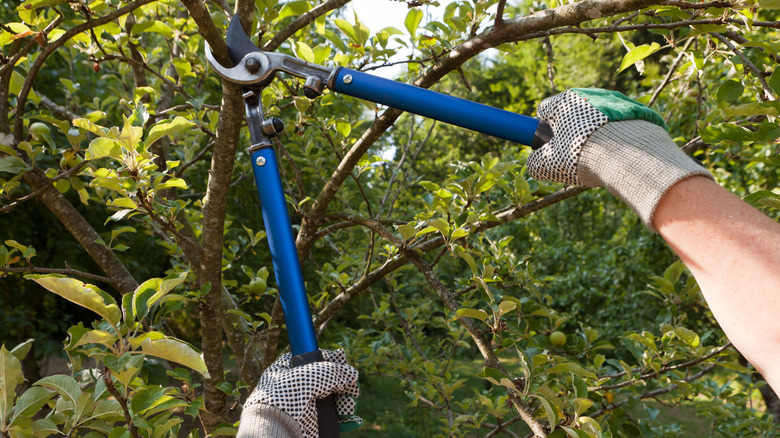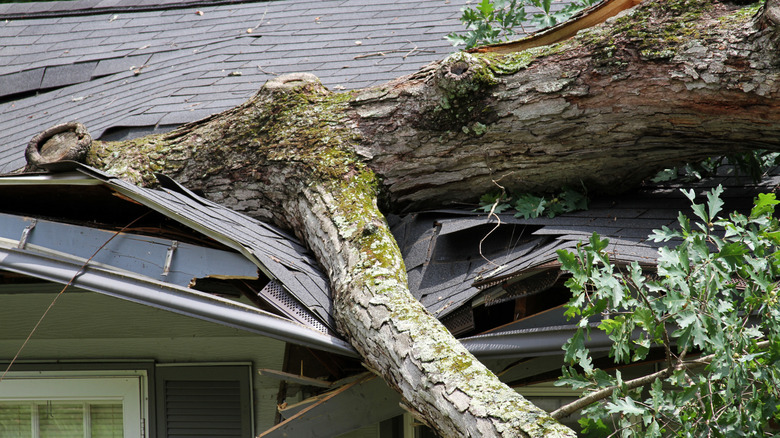Skipping Tree Pruning This Year? You're Risking Structural Damage
As the temperature drops, getting outside and finishing the rest of your chores for the season can be challenging. As a result, it can be tempting to skip some of the tasks you have lined up to get your yard winter-ready, including pruning any trees in your yard.
For many trees in your yard, winter can be one of the best times to prune and trim away excess branches. During this time of the year, most trees are dormant, and so there's less worry about diseases infiltrating any cut branches. You've also likely already raked up the remains of your tree's leaves, meaning that the branches themselves are bare and easier to inspect. However, winter being the best time to prune trees doesn't make the task any easier on you, and you may find yourself wondering if skipping tree pruning this year could lead to any problems.
Unfortunately, the answer is yes; not pruning your trees can lead to some serious problems. While this can include more minor inconveniences, such as needing to replace a tree that dies as a result of lack of pruning, some of the consequences can be more costly — and dangerous — than others, such as structural damage to your home if a branch or the tree itself were to fall.
Structural damage that can occur when skipping winter pruning
If you're following the 'three D' rule when pruning your trees, then you're likely keeping an eye out for branches that are dead, diseased, or damaged, as well as any branches that hang over structures or gathering spots in your yard. This pruning practice leaves you with a tree that isn't just visually appealing but also controlled, with no unwanted or untamed branches posing a problem in your yard. As a result, when you skip pruning, branches that fall into these categories are left on the tree, where they can grow weaker in the face of heavy wind and rain.
If this occurs, there is a potential that the weakened branches, or even an unhealthy tree itself, can fall in your yard. While there is a chance that these could land harmlessly, leaving you with nothing but a slight mess to clean up, fallen trees or branches could also land on your home. Depending on the size of your branch, this could lead to significant structural damage, such as a caved-in wall or roof. Even smaller branches can damage scratch your home's roof or break windows.
To reduce the likelihood of structural damage to your home, especially if you live in an area prone to heavier winter weather, it's essential to not only prune your tree but inspect it regularly to know when an additional pruning is needed. It's also recommended to have a certified arborist conduct a tree inspection every few years for issues that you may miss.

